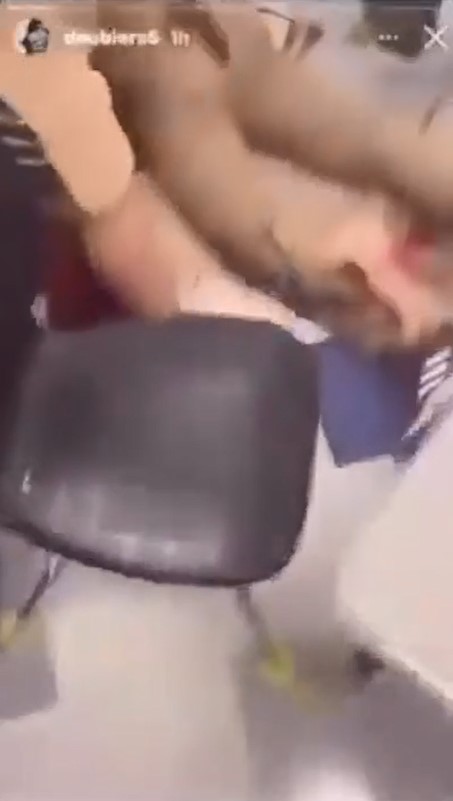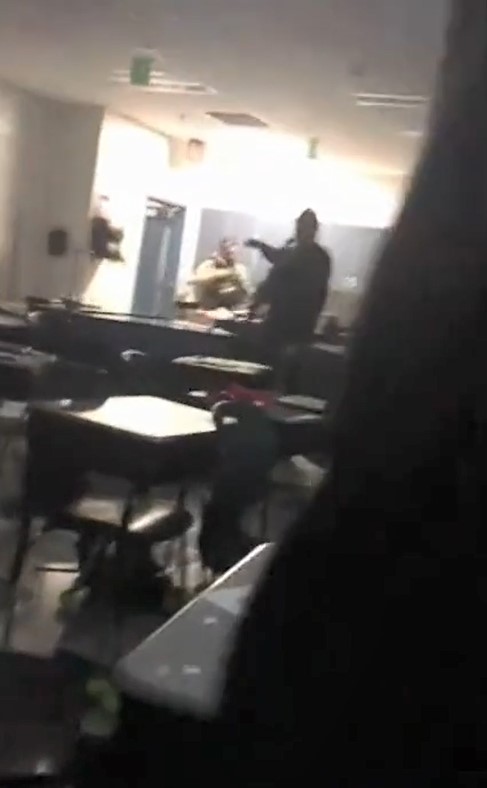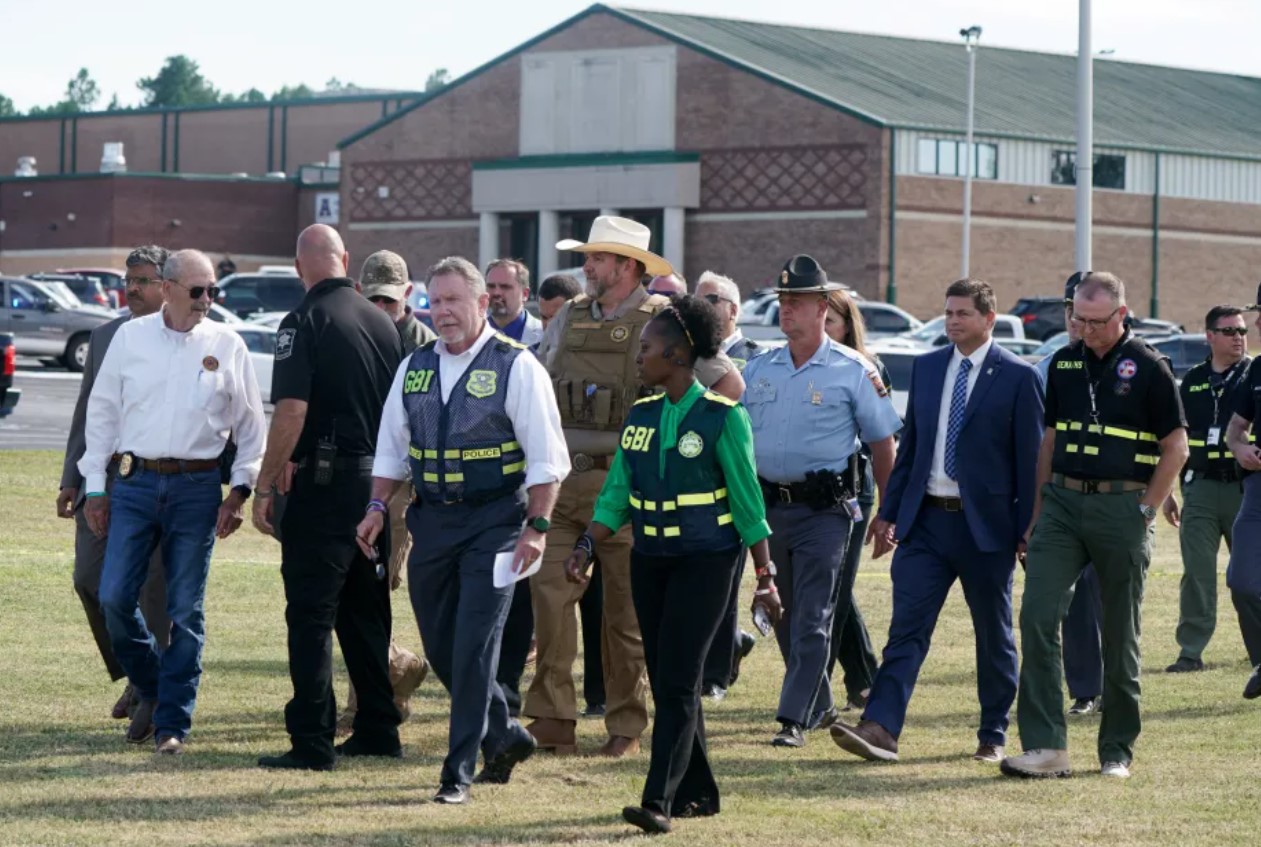Georgia School Shooting Video and Community Response
On a tragic Wednesday in Winder, Georgia, a 14-year-old student unleashed horror at Apalachee High School, a quiet learning community normally bustling with youthful energy. The young assailant, armed with an assault-style rifle, opened fire, leaving a trail of devastation that resulted in the deaths of four individuals including two of his fellow students and two respected teachers. The community was plunged into chaos as the incident unfolded, casting a shadow over the school known for its vibrant educational environment. The Georgia school shooting video captures these harrowing moments, documenting the chaos and immediate response by students and staff.
As shots echoed through the hallways, the school’s immediate response was a testament to the harsh reality that such institutions are increasingly prepared for. Terrified students scrambled for safety, converting classrooms into fortresses. In junior Layla Ferrell’s health class, the stark message “hard lockdown” flashed across a screen, prompting the students to quickly pile desks and chairs against the door in a makeshift barricade. The atmosphere was thick with fear, but the urgency and resilience of these young individuals shone through their improvised defenses.
Outside the classrooms, the response was equally frantic but focused. Teachers, some removing their shirts to staunch bleeding, transformed into first responders, providing critical initial care to gunshot victims. The school resource officers, trained for such grim scenarios, swiftly located and confronted the shooter, who surrendered without further conflict. This rapid containment by police prevented a bad situation from becoming even worse, showcasing a well-coordinated effort between school staff and local law enforcement.
This harrowing day at Apalachee High School reflects a growing epidemic of school shootings that continue to shake the foundations of educational institutions across the United States. It raises profound questions about security, the accessibility of weapons, and the psychological toll such events levy on students and educators alike.
| Aspect | Details |
|---|---|
| Event | School shooting at Apalachee High School, Winder, Georgia |
| Date | Wednesday (specific date not mentioned) |
| Assailant | 14-year-old student |
| Weapon | Assault-style rifle |
| Casualties | 4 dead (2 students, 2 teachers) |
| School Response | Implemented “hard lockdown,” classrooms turned into fortresses by stacking desks and chairs |
| Immediate Reaction | Students and teachers acted as first responders; police swiftly confronted and arrested shooter |
| Impact | Chaos in the community, raises questions on security and psychological toll of such events |
Content
Incident Details and Video
The serene midday routine at Apalachee High School in Winder, Georgia, was shattered when a 14-year-old student opened fire, turning a normal school day into a scene of terror and tragedy. The shooting occurred shortly before noon, disrupting the calm that typically accompanied the lunch hour. The perpetrator, armed with an assault-style rifle, managed to unleash devastation within the school’s walls, claiming the lives of four individuals.
Georgia School Shooting Video and A Harrowing Look at the Tragedy in Winder
The victims of this heartbreaking event were two students, Mason Schermerhorn and Christian Angulo, both only 14 years old, and two teachers, Richard Aspinwall and Christina Irimie. These individuals were well-regarded members of the school community, their untimely deaths leaving a void that echoed through the hearts of students, staff, and families alike. The community was left reeling as the identities of the deceased were confirmed, casting a pall over the school known for its spirited academic and social life.
The shooter, a young student of the same school, was apprehended almost immediately after the onset of the attack. His surrender to the police was swift, facilitated by the prompt response of the school resource officers who encountered him minutes after the first reports of gunfire. This quick action likely prevented further loss of life and facilitated a faster lockdown of the school to ensure the safety of other students and staff.
| Aspect | Details |
|---|---|
| Location | Apalachee High School, Winder, Georgia |
| Time of Event | Shortly before noon |
| Perpetrator | 14-year-old student, armed with an assault-style rifle |
| Victims | Two students (Mason Schermerhorn, Christian Angulo) and two teachers (Richard Aspinwall, Christina Irimie) |
| Immediate Response | Shooter apprehended swiftly by school resource officers, facilitating a quick lockdown |
| Community Impact | Deep sense of loss and disruption to the school’s academic and social life |
Eyewitness Accounts
In the chaos that ensued, the stories of those who lived through the ordeal paint a vivid picture of fear, bravery, and survival. Junior Layla Ferrell recalls the moment the lockdown was declared in her health class. The classroom, usually a place of learning and laughter, transformed instantly as the reality of the situation set in. Lights flashed and screens displayed the ominous warning of a “hard lockdown,” prompting Layla and her classmates to barricade the door with desks and chairs, a desperate effort to protect themselves from the potential threat outside their makeshift fortress.
Sophomore Kaylee Abner experienced the horror in her geometry class. When gunshots rang out, a palpable terror swept through the room. Under the guidance of their teacher, students ducked for cover behind desks that were quickly flipped to serve as barricades. Amidst the sound of gunfire, Kaylee found solace in the solidarity of her classmates, holding hands with a peer who prayed for safety. This moment of shared vulnerability highlighted the profound impact of the event on the students’ psyche.
The narrative of parental fear and anguish was embodied by Erin Clark, a mother whose son Ethan was among the students caught up in the shooting. Receiving a text message from her son about the active shooter, she rushed from her job at a nearby Amazon warehouse, driven by a desperate need to ensure her son’s safety. The frantic texts exchanged between Erin and Ethan during her harrowing journey to the school were filled with expressions of love and fear, reflecting the deep parental instinct to protect. Her relief at finding Ethan safe, sitting on the bleachers amidst other shaken students, was a poignant reminder of the emotional toll such incidents take on families.
These eyewitness accounts, from students barricading themselves in classrooms to a mother’s desperate race against time, underscore the personal and communal trauma inflicted by school shootings. They also highlight the courage and quick thinking of those involved, who, in moments of crisis, acted with remarkable bravery to safeguard themselves and their peers. As the community begins to heal, these stories form the fabric of a shared narrative of resilience and recovery in the face of unimaginable adversity.
| Person | Experience | Response |
|---|---|---|
| Layla Ferrell (Junior) | Health class; lockdown declared, classroom turned into a fortress. | Barricaded door with desks and chairs. |
| Kaylee Abner (Sophomore) | Geometry class; gunshots heard, terror in the classroom. | Ducked behind flipped desks, held hands with classmates. |
| Erin Clark (Parent) | Received a text about the shooting while at work. | Rushed to the school, experienced intense fear and relief upon finding son safe. |
Law Enforcement and Emergency Response
The rapid response of law enforcement was critical in controlling the situation at Apalachee High School, demonstrating the vital role that school resource officers play in such crises. Within minutes of the first reports of gunfire, two officers stationed at the school acted swiftly. They located the shooter, who surrendered almost immediately, preventing further violence. This quick intervention highlights the importance of having trained security personnel on-site, prepared to address threats in real-time.
Simultaneously, the medical response was prompt and efficient. First responders and medical teams worked in tandem to provide emergency care to the injured. On-site, teachers and other staff members improvised to administer first aid, using available resources to manage wounds until professional help could arrive. Victims were quickly transported to several hospitals in the vicinity. Despite the severity of the situation, the coordinated effort between school officials, first responders, and medical facilities ensured that all injured individuals received the necessary care promptly. The prognosis for those injured was optimistic, with expectations set for all to survive their injuries, a testament to the effectiveness of the emergency response strategy employed during the crisis.
| Aspect | Details |
|---|---|
| Law Enforcement Response | Two school resource officers acted swiftly to locate and apprehend the shooter within minutes, preventing further violence. |
| Medical Response | First responders and medical teams provided prompt and efficient care; on-site first aid by staff, victims transported to hospitals. |
| Outcome | Optimistic prognosis for the injured, with expectations for all to survive, highlighting effective emergency response strategies. |
Background and Security Failures
The events leading up to the tragedy at Apalachee High School were marked by missed warnings and security lapses that might have prevented the shooting. Months before the incident, the FBI received anonymous tips about a potential threat from the shooter. These tips indicated that the student had expressed intentions online to commit a school shooting. The FBI investigated and narrowed down the threat but ultimately referred the case to the local sheriff’s department in Jackson County for further follow-up.
The sheriff’s department interviewed the then-13-year-old suspect and his father, who confirmed the presence of hunting guns at home but assured that the teenager had no unsupervised access to them. Despite these assurances, the effectiveness of this security measure is called into question by the events that unfolded. The sheriff’s office decided to alert the local schools for continued monitoring, but there was no probable cause for further action at that time. This decision was based on the available evidence, which, in hindsight, was insufficient to prevent the tragedy.
Discussion on how the shooter obtained and brought the weapon to school is still under investigation. However, it is clear that there was a significant failure in ensuring that firearms were kept out of the hands of someone who had previously been flagged as a potential threat. This lapse points to a broader issue of gun security and management, especially in households where children are present.
Furthermore, the ease with which the shooter brought an assault-style rifle into a school indicates critical vulnerabilities in the school’s security protocols. Whether it was a failure of physical security measures (such as metal detectors or bag checks) or a lack of adequate surveillance, the systems in place were not sufficient to deter or detect the carrying in of such a weapon.
These background issues and security failures emphasize the need for a more rigorous approach to threat assessment and response, including better communication between federal and local law enforcement and more stringent school security measures. The incident at Apalachee High School serves as a stark reminder of the gaps that still exist in protecting schools from such devastating acts of violence.
| Aspect | Details |
|---|---|
| Initial Warnings | FBI received anonymous tips months before the incident about the shooter’s intentions, referred case to local sheriff for follow-up. |
| Local Sheriff’s Response | Interviewed suspect and father, confirmed guns at home but no unsupervised access. Alerted schools but found no probable cause for further action. |
| Security Lapses | Failure in gun security and management at home; critical vulnerabilities in school’s security protocols. |
| Outcome and Implications | Incident underscores the need for more rigorous threat assessment and response, better communication between law enforcement, and stricter school security measures. |
Community Reaction
In the aftermath of the Apalachee High School shooting, the community of Winder, Georgia, and the nation responded with a mixture of grief, solidarity, and calls for action. Local Sheriff Jud Smith, visibly emotional, expressed a deep personal connection to the tragedy, emphasizing that “hate will not prevail” in the county and affirming a commitment to love and unity in response to the violence. His sentiment resonated with the community, echoing the pain and resilience of those directly affected.
Nationally, the response was swift and poignant. Vice President Kamala Harris, during a campaign stop, spoke of the “outrageous” reality that parents must fear for their children’s safety at school, a sentiment that underscored the national dismay at yet another school shooting. Former President Donald Trump referred to the shooter as a “sick and deranged monster,” lamenting the loss of young lives far too soon. These statements from political figures highlighted the broad spectrum of concern and the ongoing debate over how to address the scourge of gun violence affecting schools across the United States.
The community’s immediate response was highlighted by a vigil held in Jug Tavern Park, where hundreds of residents gathered to mourn and remember the victims. The vigil included participants from Apalachee High School and its crosstown rival, Winder-Barrow High School, demonstrating a united front in the face of tragedy. The event featured prayers, mourning rituals from different faiths, and communal support, offering a space for healing and solidarity.
| Aspect | Details |
|---|---|
| Local Response | Sheriff Jud Smith expressed commitment to love and unity, reflecting community’s resilience and grief. |
| National Response | Vice President Kamala Harris and Former President Donald Trump expressed dismay and outrage, highlighting national concern over school gun violence. |
| Community Vigil | Held in Jug Tavern Park with participation from local schools, included prayers and mourning rituals, symbolizing communal support and solidarity. |
The shooting at Apalachee High School raises urgent questions about the effectiveness of existing school safety protocols. Despite frequent active shooter drills and heightened security measures, schools continue to be targets for such devastating attacks. The frequency of school shootings in the U.S. has only intensified the debate over how to protect students and educators effectively.
The incident adds to a growing list of school shootings that have sparked heated debates on gun control but have led to little substantial change in national gun laws. The repeated tragedies underline the critical need for legislative action to address the root causes of gun violence and improve safety measures in schools.
To prevent future incidents, it is crucial for communities and policymakers to engage in meaningful dialogue and take decisive action. Suggestions for community involvement include advocating for stricter gun control laws, improving mental health resources for students, and strengthening school security protocols. Additionally, there is a need for ongoing education and awareness programs to help identify and mitigate potential threats before they escalate into violence.
In the face of such violence, the community’s response highlights a powerful resolve to foster love and unity. It is through collective effort and shared resolve that society can hope to overcome the challenges posed by gun violence and ensure a safe educational environment for all children.
Daily Hot News -


